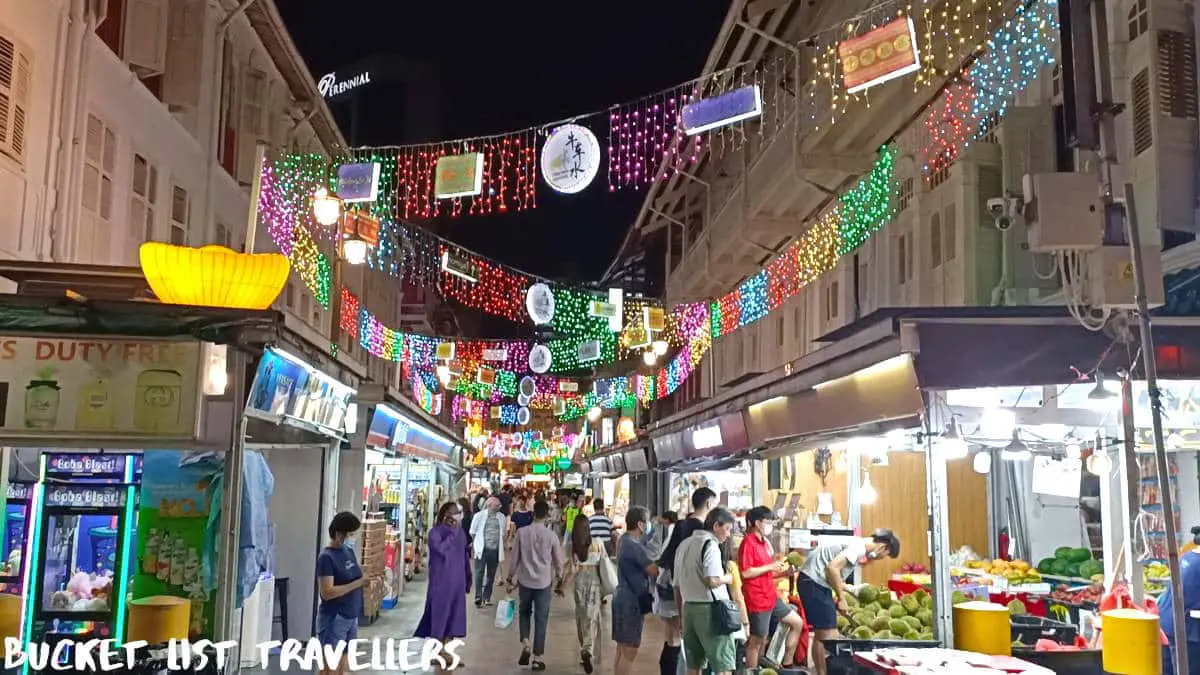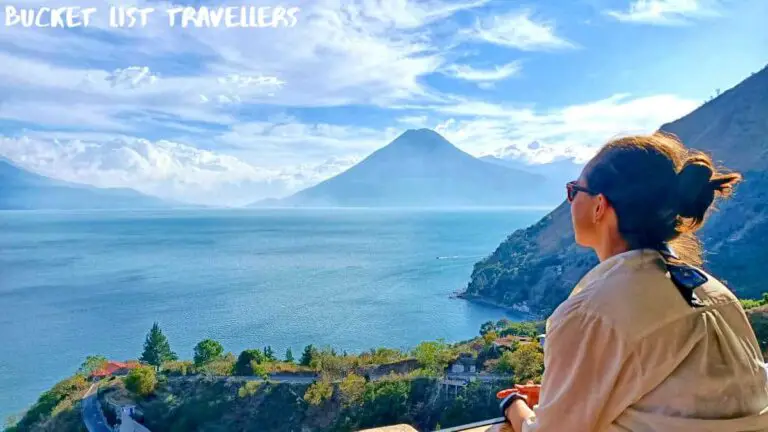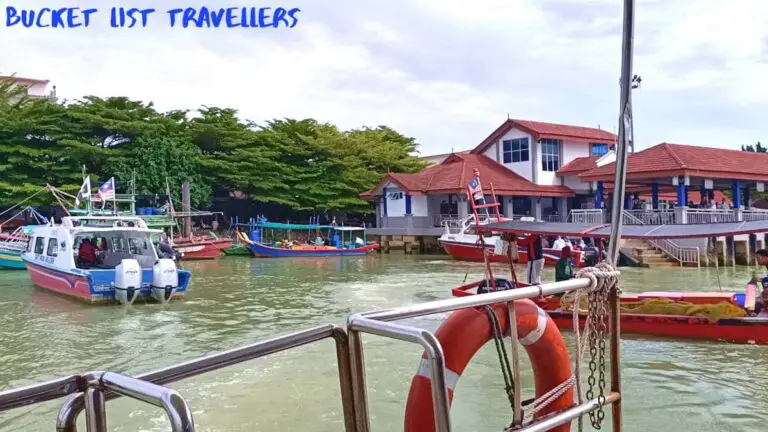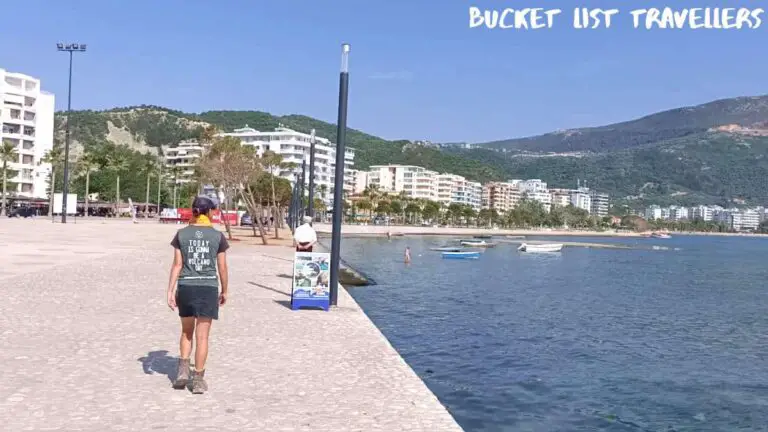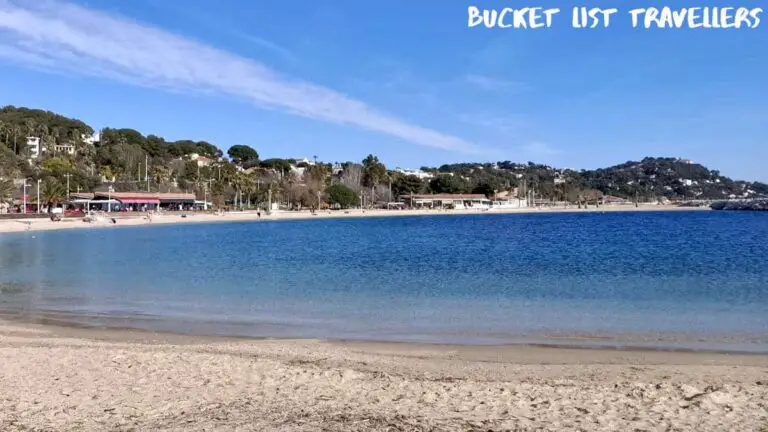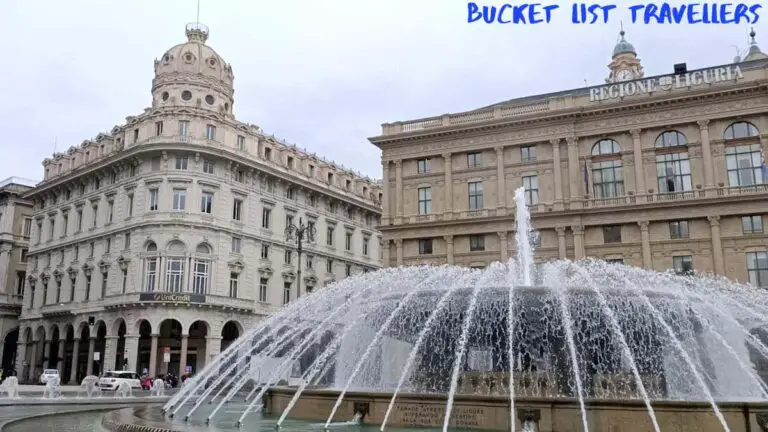The ultra-modern city-state of Singapore is somewhere you must visit at least once in your life! This bustling metropolis is a melting pot of cultures with amazing food and stunning architecture. It is a clean and efficient city with a world class public transport system. Iconic landmarks can be found throughout the city such as the one-of-a-kind Marina Bay and the always vibrant Chinatown area. Singapore is a great place to shop, eat and take in the sights. In this Singapore destination guide we’ll share what you need to know to plan the ultimate Singapore vacation.
Short on time? Here are our Singapore top recommendations:
Highlights: marvel at the iconic Marina Bay Sands, wander through the Gardens by the Bay, shop ’til you drop and indulge in world class food that suits any budget.
Activities: book your Singapore Tours with Get Your Guide.
Accommodation: we use Agoda to find the best hotels in Singapore.
Flights: find cheapest flights with cashback on WayAway.
For cheap flights in Asia, we use AirAsia.
Airport Lounge Access: start your holiday the right way with Priority Pass.
Travel Medical Insurance: SafetyWing Nomad Insurance is the ideal choice for long-term travellers and digital nomads.
What is Singapore known for?
Singapore is a powerhouse of Asia and is known for being one of the cleanest cities in the world. It even has a ban on chewing gum to keep its streets are pristine! Singapore is also a garden city and one of its most iconic attractions is the Gardens by the Bay. This sprawling nature park contains plants from all around the world as well as distinctive vertical gardens of Supertree Grove. Overlooking the gardens is Marina Bay Sands, a distinctive landmark resort that is synonymous with the city. Finally, Singapore has an amazing array of food to delight your taste buds. From bustling local hawker centres to world-class fine dining and local delicacies like Singapore crab, Singapore’s food scene is unparalleled.
Why you should visit Singapore

One of the great cities in the world, Singapore is built to impress! This glistening city overlooks the beautiful harbour of Marina Bay with its futuristic buildings and beautiful waterfront promenades. The city has a wonderful blend of build structures as well as green space. Its towering skyscrapers overlook gorgeous sprawling parks. Additionally, it’s surprisingly easy to get around the city via Singapore’s MRT transport system. Singapore also has one of the best and busiest airports in the world, which makes it a perfect stopover when travelling through Asia.
There’s always plenty to see and do in Singapore. Its food scene is a big attraction, with its blend of Malay, Chinese and Indian cuisine among others providing plenty of options to tempt your taste buds. We love visiting hawker markets in Singapore, and the city also has a large number of establishments that have received the Michelin seal of approval. Other than food, Singapore is great for shopping and sightseeing.
Singapore Destination Guide: Know before you go
Basic info about Singapore
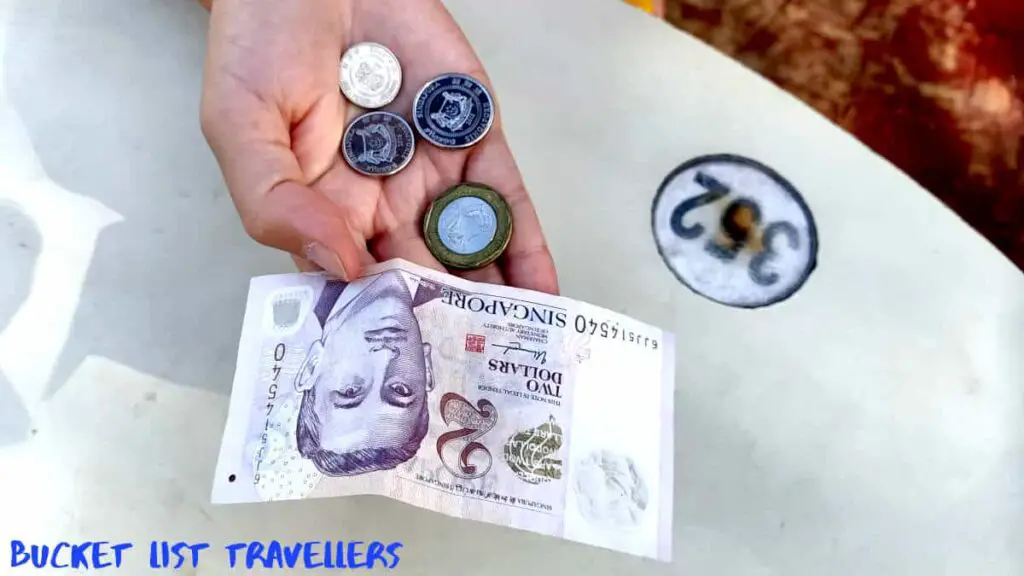
- City name in other languages – 新加坡共和国 (Chinese), Republik Singapura (Malay), சிங்கப்பூர் குடியரசு (Tamil)
- Language – the four official languages of Singapore are English, Malay, Standard Chinese and Tamil, with the official national language being Malay. In practice the common language is English, which most people speak. Singaporeans also speak an informal form of English known as Singlish between themselves.
- Currency – Singapore Dollar (SGD). This has been the official currency of Singapore since 1967. Brunei Dollars are also widely accepted in the country. Currency exchanges can be found in most cities and ATMs are also available widely throughout the country.
- Population – 5.5 million (2021)
- Area – 728.6 km2 (281.3 sq mi)
- City-State – Singapore
- Emergency number – 995
- Police number – 999
Utilities in Singapore
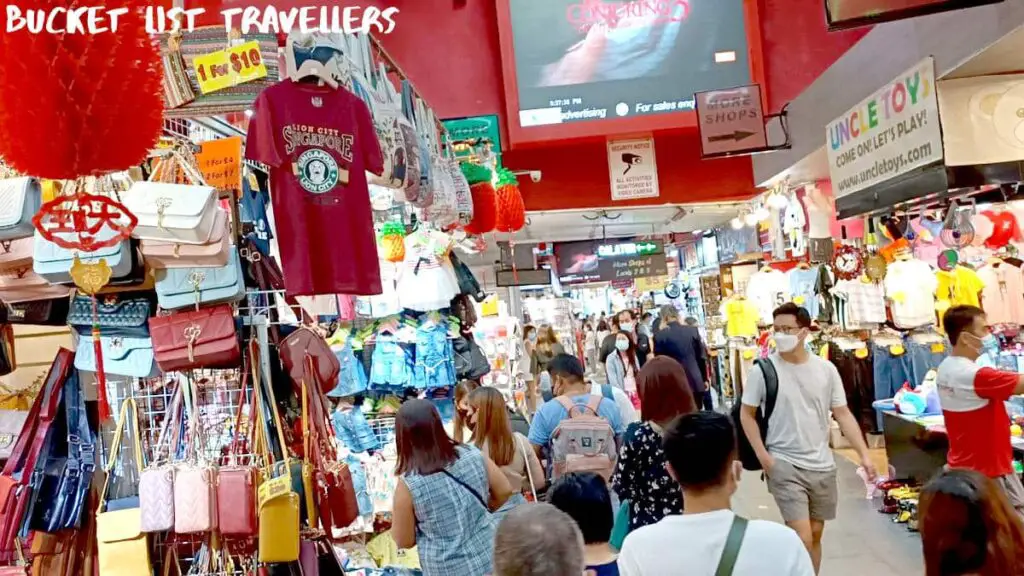
- Electricity – Singapore uses Type G power plugs. The country operates on a 230v supply voltage at 50Hz. Power outages are not common in Singapore.
- Water – the tap water in Singapore is safe to drink.
- Toilets – sit-down flushing toilets are the most common type of toilet in Singapore, although Turkish style squat toilets can be found in some places. You can flush your toilet paper in the bowl. Public toilets common in Singapore and are usually free to use. As one of the cleanest cities in the world, it is illegal not to flush a public toilet in Singapore (penalty: $150). Singapore also has Urine Detection Devices in some elevators that will lock the doors to the lift and call the police to arrest you if you pee in an elevator.
- Telephone country code: +65
Where is Singapore?
Singapore is city-state in Southeast Asia. It is an island located on the southern tip of the Malay Peninsula and is accessible via bridge to Malaysia. Furthermore Singapore has maritime borders with Malaysia as well as Indonesia. Its coastline borders the Strait of Malacca, the Singapore Strait, the South China Sea as well as the Straits of Johor.
Singapore consists of one main island as well as 63 satellite islands and islets, and also one outlying islet.
How to get to Singapore
Singapore destination guide: Arriving by land
Singapore intercity land transport
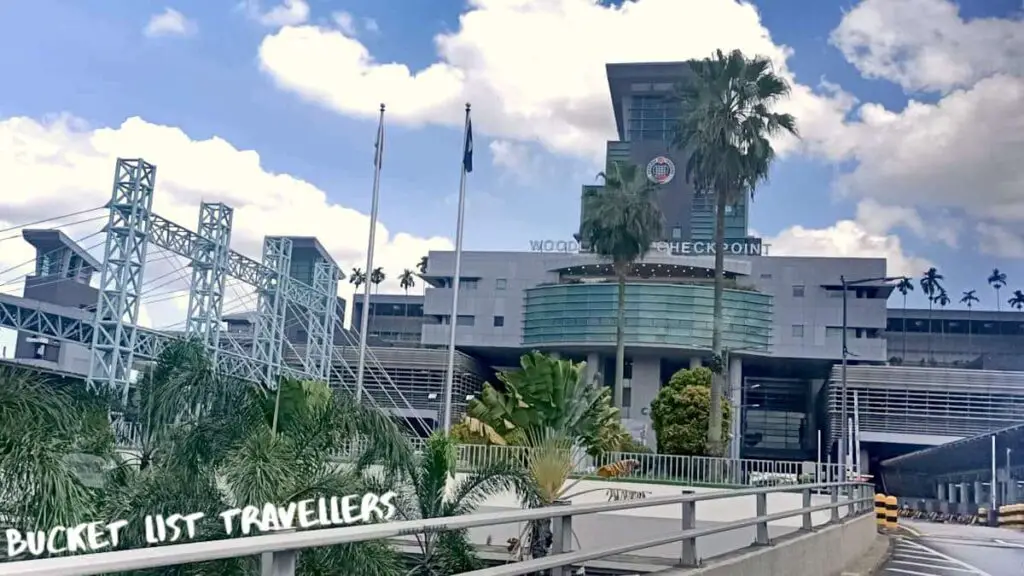
The main transport options for travelling overland to Singapore are:
- Private vehicle
- Private transport operator
- Train
- Shuttle
- Bus
- Bike
Driving to Singapore from Malaysia
If you are driving to Singapore, here are the travel times and distances:
- Johor Bahru Malaysia – 41 minutes (23km, 14miles) without tolls.
- Iskandar Puteri Malaysia – 45 minutes (40km, 25miles) without tolls.
- Malacca Malaysia – 4 hours 10 minutes (350km, 217miles) with tolls or 7 hours 5 minutes (401km, 249miles) without tolls.
- Kuala Lumpur Malaysia – 4 hours 10 minutes (350km, 217miles) with tolls or 7 hours 5 minutes (401km, 249miles) without tolls.
Intercity trains to Singapore
An intercity railway service called the KTM West Coast railway line connects Singapore to Malaysia. It is operated by Malaysia’s railway company Keretapi Tanah Melayu (KTM). Currently construction is underway to replace this railway with the Johor Bahru-Singapore Rapid Transit System which is due to complete in 2026.
High speed trains in Singapore
A high speed rail link was planned between Kuala Lumpur and Singapore. Under the plans, the journey between the two cities would have been only 90 minutes. This plan was scrapped in 2021, but there are currently negotiations to revive the project.
Intercity buses to Singapore
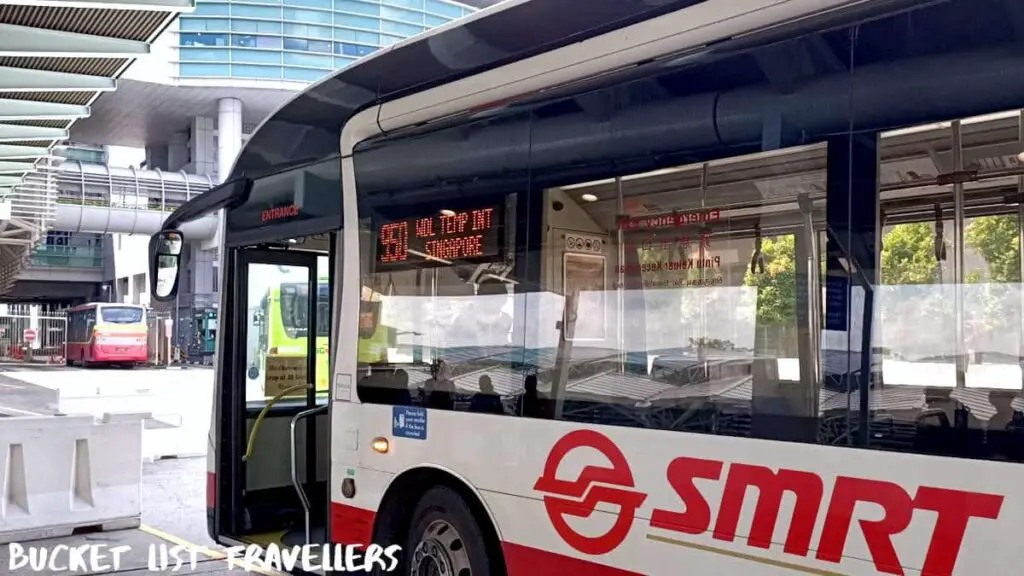
From Singapore there are intercity buses to various cities in Malaysia and Thailand. Intercity bus companies in Singapore include Grab Intercity, KKKL as well as 99 Coachland Express. Popular bus destinations from Singapore include:
- Johor Bahru Malaysia – travel time 40 minutes. Tickets start from 3 SGD one way.
- Mersing Malaysia – travel time 3 hours 30 minutes. Tickets start from 30 SGD one way.
- Malacca Malaysia – travel time 4 hours. Tickets start from 9 SGD one way.
- Genting Highlands Malaysia – travel time 6.5 hours. Tickets start from 35 SGD one way.
- Kuala Lumpur Malaysia – travel time 5.5 hours. Tickets start from 15 SGD one way.
Singapore destination guide: Arriving by air
The nearest airport to Singapore is Seletar Airport (Airport code XSP). This international airport is 14km (9miles) from the city.
Other nearby airports include:
- Singapore Changi Airport (Airport code SIN). This airport is 17km (11miles) away.
- Hang Nadim Airport (Airport code BTH). This airport is 35km (22miles) away.
- Senai International Airport (Airport code JHB). This airport is 44km (27miles) away.
The national airline of Singapore is Singapore Airlines.
For cheap flights in Asia, we use AirAsia.
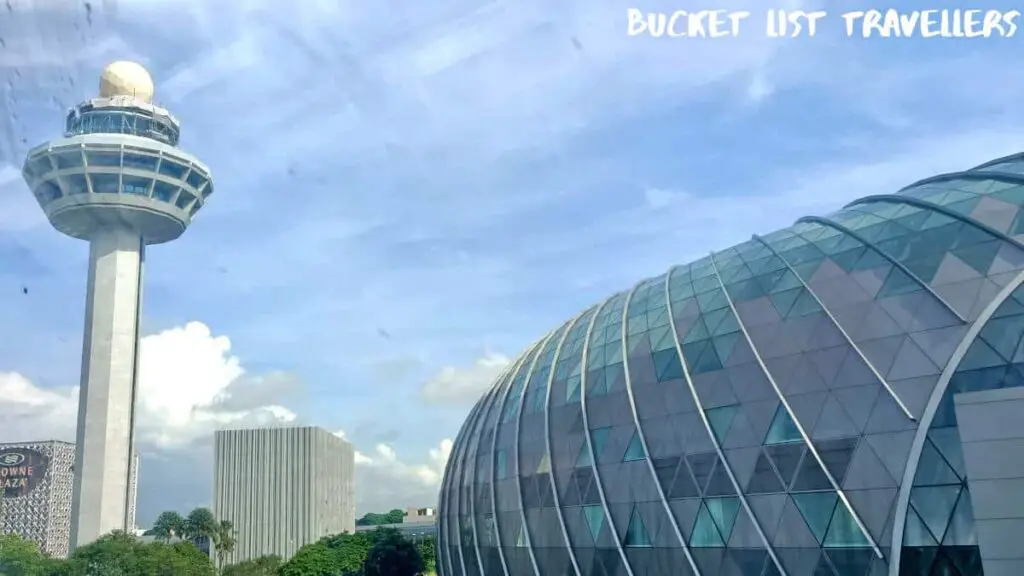
Singapore destination guide: Arriving by boat
Marina Bay Cruise Centre Singapore is one of the biggest cruise terminals in Asia. It is conveniently located in a popular tourist area of Singapore. Public transport connects the terminal to the airport as well as other parts of Singapore.
The main ferry and bumboat terminals are at:
- Marina South Pier
- Marina Bay Cruise Centre Singapore
- Changi Point Ferry Terminal
Don’t forget to bring your passport with you for any ferry trips in Singapore, even if you aren’t leaving the country.
Singapore destination guide: How to get around Singapore
Walking in Singapore
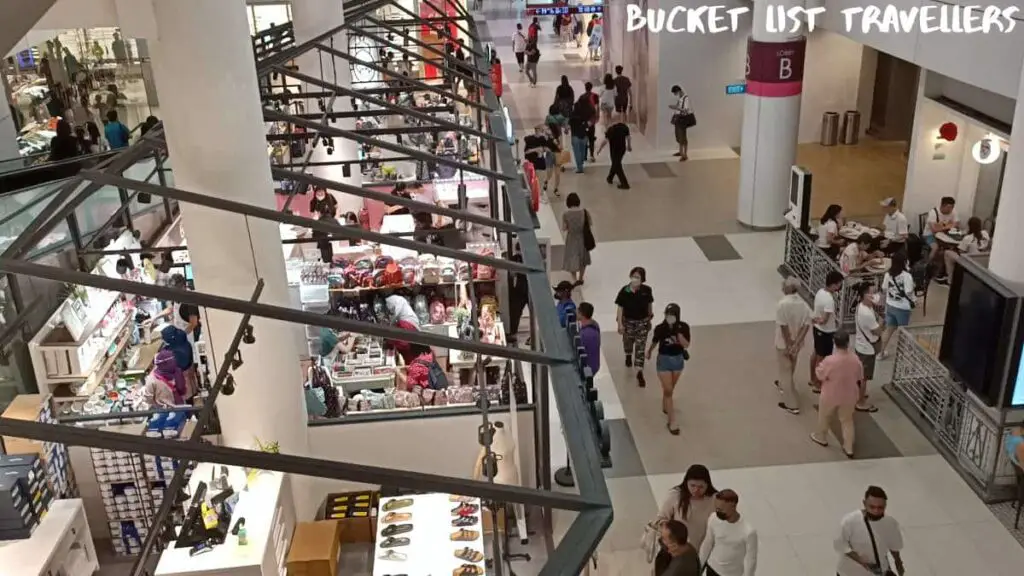
We recommend using a combination of public transport as well as walking to get around Singapore. Singapore is a surprisingly walkable city with an extensive network of covered walkways to keep you out of the sun. There are also a number of scenic promenades overlooking Marina Bay.
Cable Cars in Singapore
There 2 cable cars in Singapore. These gondola lifts provide access to the higher areas of the city. The two cable cars are:
- Mount Faber Line – round trip ticket is 33 SGD for adults or 29.70 SGD if booked online (as at 2024).
- Sentosa Lina – round trip ticket is 17 SGD (price as at 2024).
Local buses in Singapore
Local buses service Singapore. Buses in Singapore are a quick and cheap way to get around town. They are modern, clean and in good condition.
Payment options for bus tickets include contactless bank cards, mobile wallets, EZ-Link Cards, concession cards, Singapore Tourist Pass or cash. EZ-Link cards are rechargable contactless smart cards that are mainly used for public transport in Singapore. Fares are higher when paying by cash.
Singapore Tourist Bus
An easy way to see Singapore is with Hop On Hop Off Sightseeing Buses. There are a few companies that offer Hop On Hop Off bus tours in Singapore. These include Singapore Big Bus, FunVee Hopper City Tours as well as City Sightseeing Singapore. These operators offer one or more bus routes with a number of stops at major attractions throughout the city. Passes are usually for 1 or 2 days and prices are around 60 SGD for an adult one day ticket (price as at 2024). There are also night tours available.
Singapore DUCKtour
A unique way to see Singapore is on a DUCKtour. These are 1 hour tours on amphibious vehicles that can go both on land and water. An adult ticket is 45 SGD (price as at 2024).
Trams in Singapore
Singapore does not currently have any tramlines. It historically had a steam tramway (1886-1894) as well as an electric tramway (1905-1927).
Mass Rapid Transport in Singapore
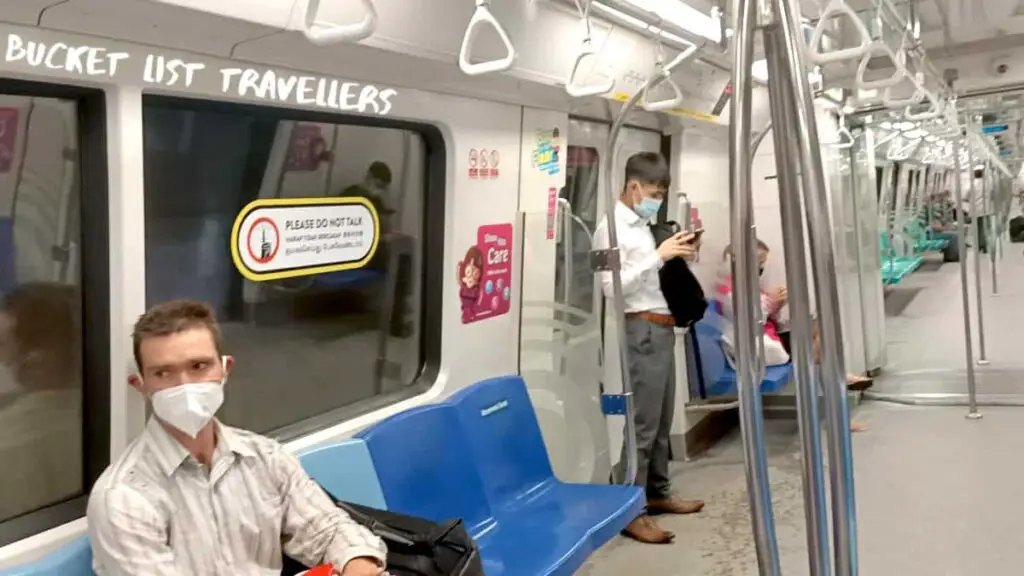
Singapore’s Mass Rapid Transport system (or MRT) is an extremely efficient and cheap way to get around the country. There are currently 6 lines on the network with more in development. It is fully automated and is the world’s most extensive driverless rapid transport system. Stations are modern and include free wifi. The MRT system is also well integrated with other forms of transport, particularly the Light Rail Transit (LRT) system.
Payment options for MRT tickets include contactless bank cards, mobile wallets, EZ-Link Cards, concession cards or the Singapore Tourist Pass. EZ-Link cards are rechargable contactless smart cards that are mainly used for public transport in Singapore.
Light Rail Transit in Singapore
Singapore’s Light Rail Transit (LRT) system feeds into the heavy rail Mass Rapid Transport System. As at 2024 it consists of 3 lines and 43 stations and operates as an automated guideway transit system.
Payment options for LRT tickets include contactless bank cards, mobile wallets, EZ-Link Cards, concession cards or the Singapore Tourist Pass. EZ-Link cards are rechargable contactless smart cards that are mainly used for public transport in Singapore.
Vehicle hire in Singapore
A wide variety of vehicles can be rented in Singapore. This includes:
- Bicycles – There are self-service bike share services available in the city such as Anywheel, SG Bike and HelloRide. Alternatively you can hire a bike from a bike hire shop such as The Bicycle Hut.
- Electric scooters
- Motorcycles
- Cars
- SUVs
- Kombi VW vans
- Boats
In Singapore they drive on the left side of the road.
Shuttles in Singapore
Shuttles make short repetitive journeys between two destinations. Common journeys include going between the airport and the city centre.
Taxis in Singapore
Taxis are common in Singapore. Fares are regulated and are usually metered. Limousine taxis offer flat rate fares which are agreed before you commence your trip. However in general your fare will include the following costs:
- The pickup fee or minimum fee – this is charged as soon as you get into the vehicle.
- Advance booking fee – a fixed fee if booked half an hour or more in advance.
- Location surcharge – this is an additional fixed fee that is charged if you get picked up from an airport, Marina Bay Sands, Resorts World Sentosa or Singapore Expo Centre.
- City area surcharge – a fixed charge to enter the CBD area.
- Electronic Road Pricing (ERP) charges
- Price per 400 metres up to 10km and then per 350 metres thereafter – a surcharge is charged on top of this for peak hours, between midnight and 6am as well as for public holidays.
- Price per hour – this is a price that gets charged when the taxi is stuck in heavy traffic.
- Additional passenger fee – this is a per passenger fixed fee for more than 4 adult passengers.
Taxi drivers do not expect tips in Singapore.
Ride-share services in Singapore
Grab is the main app based ride-hailing service in Singapore. Ryde, TADA and Gojek Singapore also operate in Singapore. Uber and Lyft do not operate in Singapore.
Singapore destination guide: Is Singapore worth visiting?
Despite its high price tag, Singapore is definitely worth visiting. It is an amazingly dynamic city which is modern, clean and vibrant. Its food scene is phenomenal, its landmarks are impressive and it’s also a great place to shop til you drop. As a major Asian transport hub, it’s a great stopover point when travelling through the area. There’s always so much to see, do and importantly to eat!
Singapore destination guide: How long to spend in Singapore
Singapore is a vibrant cosmopolitan country with plenty of attractions and a great food scene. However it is also an expensive place to visit, so your budget may limit the amount of time you spend in Singapore. We’ve been to Singapore a couple of times for short stopovers. You can see a lot of the city in just one or two days.
Singapore destination guide: What to do in Singapore
Singapore is a vibrant cosmopolitan city with many activities on offer. It has a range of great free activities as well as paid activities.
Singapore destination guide: Free things to do in Singapore
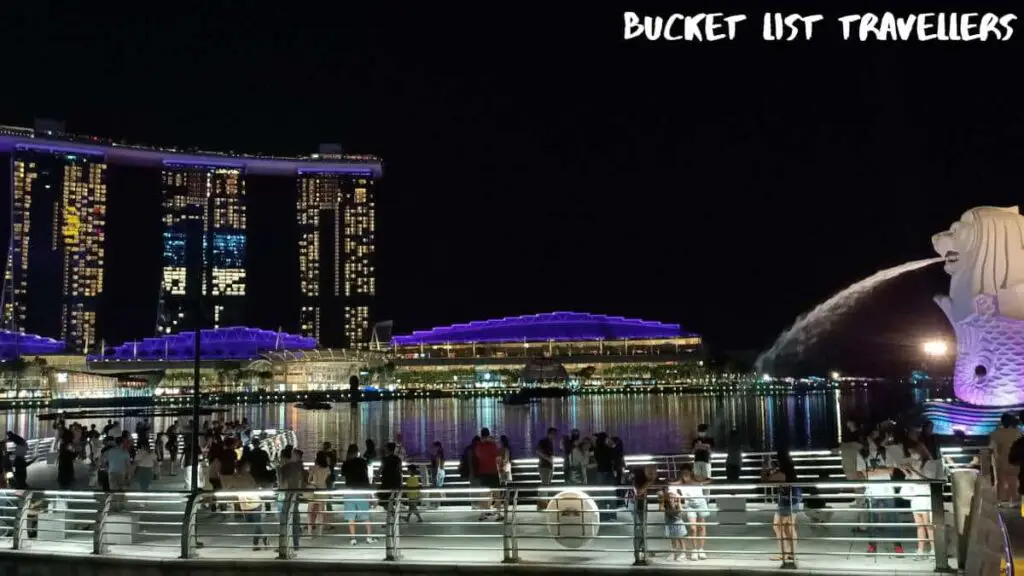
There are enough free activities in Singapore to keep you entertained for a weekend or even a leisurely week:
- Gardens by the Bay
- Singapore Botanic Gardens
- Marina Bay
- Supertree Grove
- Chinatown
- Orchard Road
- Merlion Park
- Buddha Tooth Relic Temple and Museum
- Waterfront Promenade
- MacRitchie Nature Trail
- Jewel Changi Airport
- Clarke Quay
- The Southern Ridges
- East Coast Park
- VivoCity
- Maxwell Food Centre
- Fort Canning Park
- Arab Street
- Little India
- The Shoppes at Marina Bay Sands
- Esplanade – Theatres on the Bay
- The Helix Bridge
- Haji Lane
- Singapore River
- Mustafa Centre
- Battlebox – entry is free, but the enhanced experience is 20 SGD for foreign adults (as at 2024).
Singapore destination guide: Paid activities in Singapore
A number of attractions in Singapore charge an entry fee:
- Singapore Zoo – entry fee is 60 SGD for adults (as at 2024).
- Cloud Forest and Flower Dome – entry fee is 32 SGD for non-resident adults (as at 2024).
- National Orchid Garden – entry fee is 15 SGD for non-resident adults (as at 2024).
- Singapore Mass Rapid Transit (SMRT)
- Sands Skypark Observation Deck – entry fee is 32 SGD for adults (as at 2024).
- Singapore Flyer – entry fee is 40 SGD for adults (as at 2024).
- Singapore Discovery Centre – entry fee from 10 SGD for foreign adults (as at 2024).
- Mandai Wildlife Reserve – entry fee is 49 SGD for adults (as at 2024).
- Singapore Cable Car – round trip ticket 35 SGD for adults or 31.50 SGD if booked online (as at 2024).
- National Museum of Singapore – entry fee is 15 SGD for foreign adults (as at 2024).
- Mandai Night Safari – entry fee is 56 SGD for adults (as at 2024).
However many of these attractions have free entry with the Singapore City Card. See the Singapore City Card section below for more information.
Singapore City Card
Go City offers a number of tourist passes which allow you to explore a range of attractions in Singapore for free. There are two types of city cards available:
- All-Inclusive Pass – for these passes you can explore as many Singapore attractions as you like for the number of days included in the pass. 2-7 day passes are available.
- Explorer Pass – for these passes you have 60 days to visit a set number of attractions in Singapore. You can choose to have anywhere from 2-7 attractions included in your pass and you can choose which attractions you want to visit as you go.
For more information, see this website: https://gocity.com/singapore/en-us
Weather in Singapore
The climate for Singapore is classified as tropical, with relatively uniform hot temperatures and high humidity throughout the year. The hottest month is June with an average temperature range of 26°C to 31°C (80°F to 89°F) and coldest month December with an average temperature between 25°C-30°C (77°F to 86°F). There are two monsoon seasons, November to early March, which is typically the most rainy, and June to September. The period of March through to June between the two monsoons is the hottest and most uncomfortable weather of the year.
Best time to visit Singapore
Singapore’s weather is often oppressively hot and humid, but the city has many solutions to make it more comfortable at any time of year. Walkways are often undercover, providing shelter from the glare of the sun. Additionally, its gardens have been developed to increase the quality of life in the city. Buildings and public transport are often air-conditioned, which also helps with dealing with the heat. Furthermore, many of the best activities in Singapore are indoor activities such as shopping and eating, which makes Singapore a great destination all year round. In terms of weather, the best time of year to visit Singapore is late February to early April when the weather is slightly cooler and less humid.
Internet and mobile phones in Singapore
There are three major internet and phone companies in Singapore – Starhub, Singtel as well as M1.
5G has been in Singapore since May 2021. 2G was switched off in Singapore in April 2017 and 3G is expected to be switched off in 2025.
Singapore is ranked 19th fastest in the world for mobile internet speeds and 1st fastest for fixed broadband. For Fixed Broadband the average download speed is 284mbps and upload is 236mbps (as at April 2024).
Cell phone SIM cards can be bought in a numbers of places throughout Singapore. These include phone stores, from post offices, supermarkets, convenience stores as well as at airports.
How much to budget for Singapore?
Is Singapore expensive?
Singapore is an expensive place to visit, but as a major travel hub, flights to Singapore are quite affordable. If you are on a tight budget, there are plenty of free activities in the city and hawker centres provide budget-friendly dining options. So while the sky’s the limit if you have money to spend, there are still plenty of ways to enjoy Singapore without breaking the bank.
Singapore destination guide: Daily spend for a couple travelling in Singapore

As a rough guide, we recommend the following budgets for a couple:
- Low-budget daily spend – 150 SGD per day for a couple will get you hostel accommodation, meals from bakeries and hawker centres, local transport and free or cheap activities such as visiting museums and parks
- Mid-range daily spend – 300 SGD per day for a couple will get you mid-range accommodation, local transport, hawker centre and cafe meals and a few paid activities
- Luxury spend – 1000 SGD per day for a couple will get you a premium experience in Singapore, staying at luxury resorts, travelling by private transport, doing a range of paid activities and eating at high end restaurants
Singapore destination guide: Accommodation in Singapore
Accommodation in Singapore is fairly expensive. While Airbnb is technically allowed in Singapore, Singapore’s restrictive housing laws means that Airbnbs are not widely available in the country.
Where to stay in Singapore
We recommend the following accommodation in Singapore:
- Best capsule hotel in Singapore – Dream Chaser Boutique Capsule Hotel Singapore is a new, clean and centrally located capsule hotel. The staff are very accommodating and approachable. The beds are very comfortable with hotel-quality bedding.
- Best hostel in Singapore – Hipstercity Hostel is a cool hostel in a very convenient location. The hostel is stylish, cosy and clean with friendly staff. It has fast wifi, privacy curtains for the beds and also provides a simple breakfast. There is a loud nightclub on the 1st floor which opens until 3am, but they provide earplugs to help with the noise.
- Best budget accommodation in Singapore – we stayed at Ibis Budget Singapore Emerald. It is a great value stay with clean and comfortable rooms. The staff are friendly and helpful and the hotel is a short walk from Kallang train station as well as Old Airport Road hawker market.
- Best mid-range hotel in Singapore – KēSa House, The Unlimited Collection by Oakwood is a newly renovated boutique hotel right in the heart of Chinatown. It is stylish and comfortable with helpful and friendly staff.
- Best luxury hotel in Sinapore – Marina Bay Sands is an iconic hotel with unparalleled views of the city. It’s worth it coming for just the infinity pool alone! The staff are fantastic and there are plenty of shops and attractions nearby. The rooms are clean, spacious and comfortable with all the amenities you need.
How much is accommodation in Singapore?
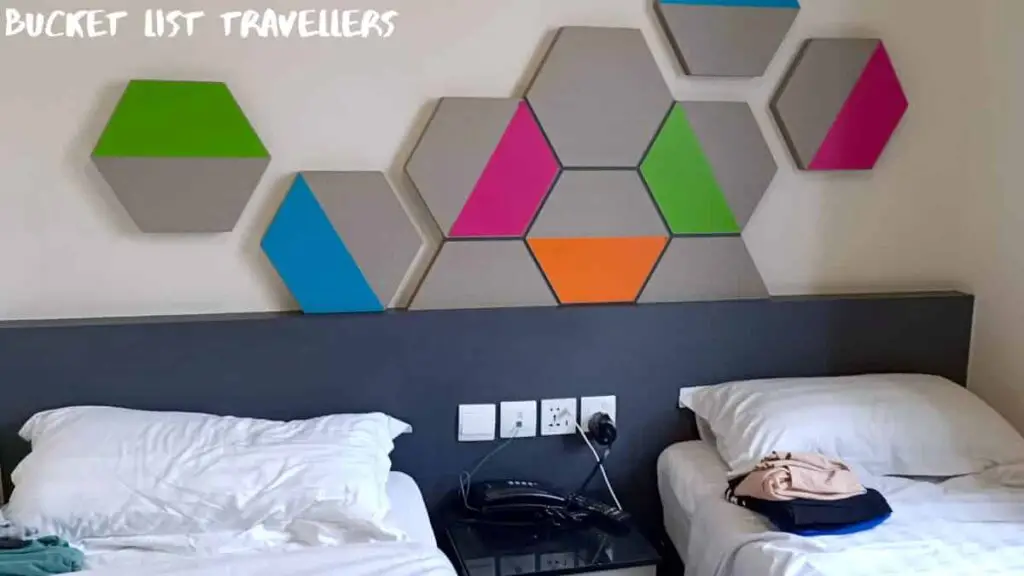
For short-term accommodation, a general price per night is as follows:
- Budget accommodation – 22-70 SGD for dorm accommodation
- Mid-range accommodation – 55-250 SGD for a private room
- Luxury accommodation – 250-1500 SGD a night for a luxury hotel/resort
- Rental property – 350-1400 SGD a night for a fully furnished 3-4 bedroom home
Singapore destination guide: Food in Singapore
Singapore has a great food scene. The melting pot of cultures that is Singapore is perfectly exemplified in its cuisine.
How much does food cost in Singapore?
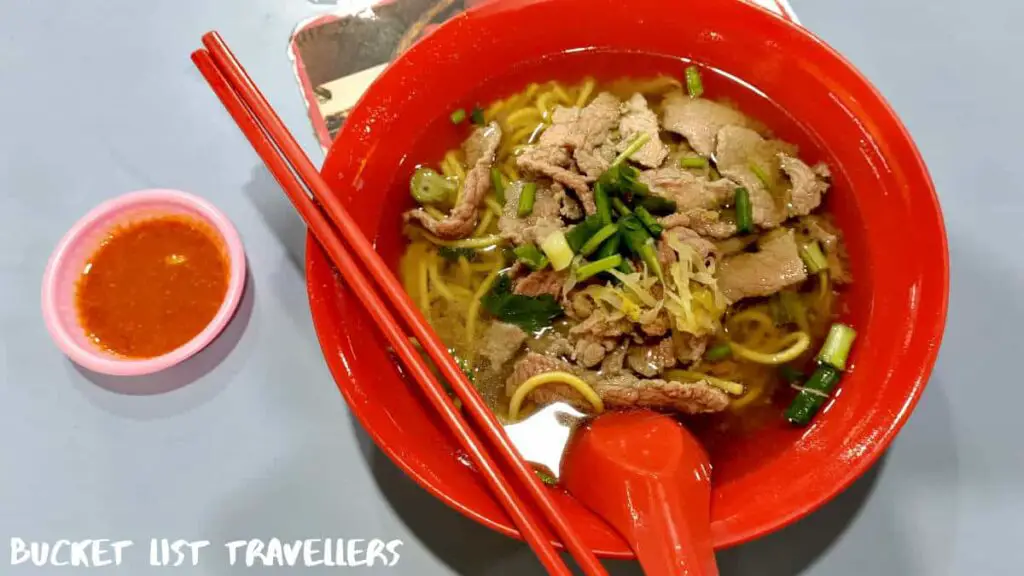
Our price guide for your food budget in Singapore is as follows (prices as at 2022):
- Restaurant meal – 10-45 SGD for a main dish
- Hawker centre food – 3-7 SGD for a dish
- Bakery food (bread/pastry/cakes) – 1.50-3 SGD
- Glass of wine – 6-22 SGD
- Coffee – 1-7 SGD
Regional dishes in Singapore
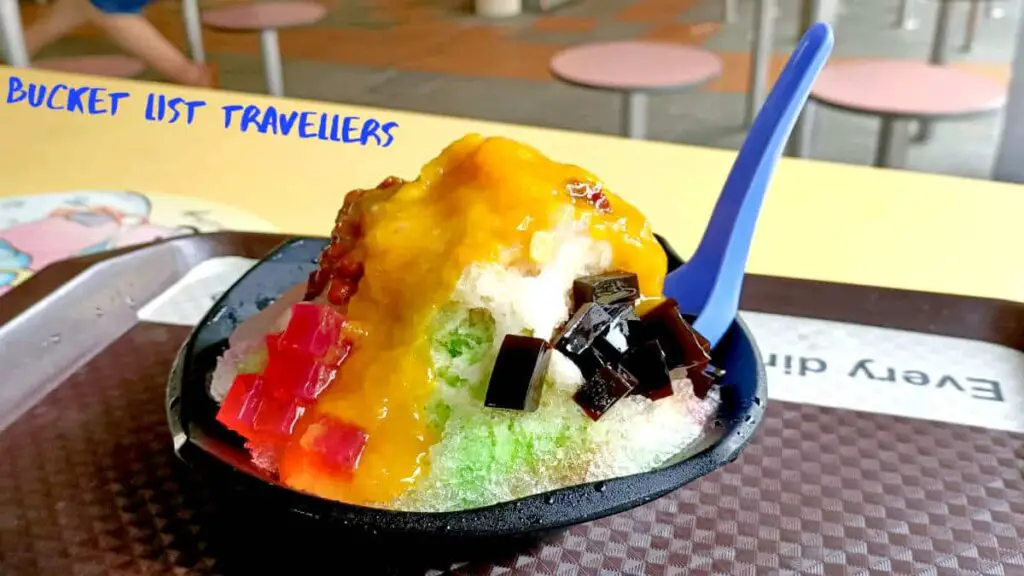
- Chilli crab
- Hainanese chicken rice
- Laksa
- Kaya toast
- Bak kut teh
- Wanton mee
- Fried carrot cake
- Nasi biryani
- Fish head curry
- Satay
- Char kuay teow
- Hokkien prawn mee
- Barbecued stingray
- Oyster omlette
- Roti prata
- Ice kacang
Cheap Eats in Singapore
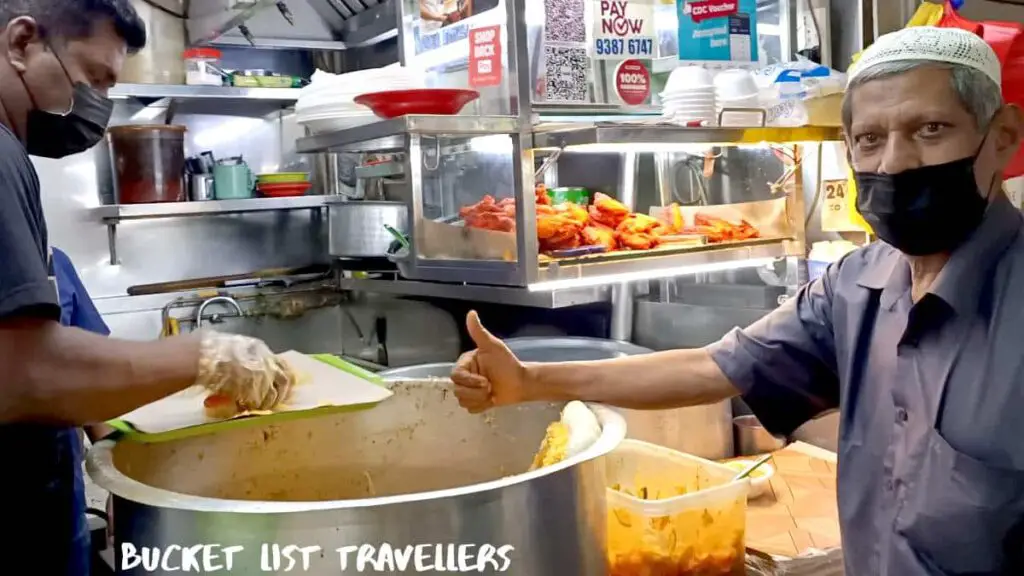
- Bakeries are a great place to get cheap and delicious food. Savoury or sweet buns are typically 1-2 SGD each.
- Hawker centres in Singapore are ubiquitous and have excellent budget friendly food. The variety of stalls available means that you have a good range of options to choose from.
- Night markets in Singapore are another of our go to places for affordable and tasty food. There’s also usually stalls selling items like clothes, toys and shoes in addition to the food stalls.
Fine dining in Singapore
Singapore is home to hundreds of Michelin Guide restaurants. The 1, 2 and 3 star Michelin restaurants are listed below:
3 star Michelin restaurants in Singapore (2024):
- Odette
- Zén
- Les Amis
2 star Michelin restaurants in Singapore (2024):
- Jaan by Kirk Westaway
- Shoukouwa
- Saint Pierre
- Cloudstreet
- Waku Ghin
- Thevar
1 star Michelin restaurants in Singapore (2024):
- Braci
- Art di Daniele Sperindio
- Willow
- Sushi Sakuta
- Lei Garden
- Labyrinth
- Whitegrass
- La Dame de Pic
- Shinji (Bras Basah Road)
- Sommer
- Nouri
- Esora
- Lerouy
- Nae:um
- Jag
- CUT
- Summer Pavilion
- Born
- Rêve
- Rhubarb
- Poise
- Terra
- Cure
- Hamamoto
- Euphoria
- Seroja
- Meta
- Ma Cuisine
- Marguerite
- Chef Kang’s
- Béni
- Shisen Hanten
- Hill Street Tai Hwa Pork Noodle
- Oshino
- Putien (Kitchener Road)
- Sushi Ichi
- Imperial Treasure Fine Teochew Cuisine (Orchard)
- Alma
- Buona Terra
- Iggy’s
- Sushi Kimura
- Summer Palace
- Candlenut
- Burnt Ends
Additionally there are over 100 Michelin Bib Gourmand and Michelin Plate restaurants in Singapore.
Singapore culture
Singapore public holidays
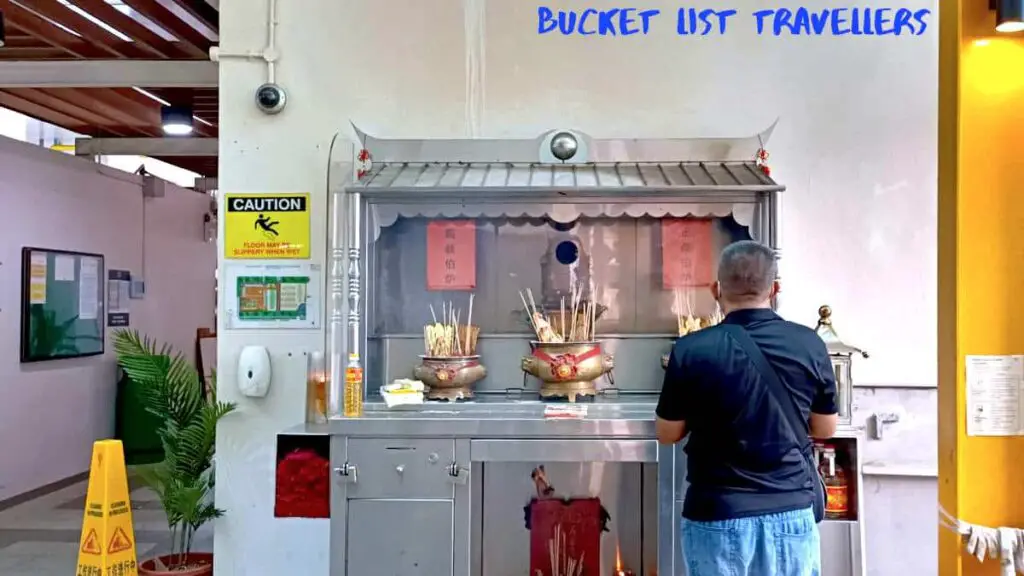
- The first day of January – 1 January
- Lunar New Year – in January or February, depending on the Lunar calendar
- Lunar New Year Holiday – day after Luna New Year’s Day, in January or February, depending on the Lunar calendar
- Good Friday – the Friday before Easter Sunday, typically in March or April
- The day following Good Friday – the Saturday before Easter Sunday, typically in March or April
- Easter Monday – the Monday after Easter Sunday, typically in March or April
- May Day (or Labour Day) – 1 May (or the following Monday if it falls on a weekend)
- Hari Raya Puasa – the last day of Ramadan, date varies
- Vesak Day – date varies, but typically April or May, sometimes June. Holiday on Monday if Vesak Day falls on a weekend
- Hari Raya Haji – 70 days after Ramadan
- National Day – 9 August
- Deepavali – date varies, but typically October or November
- Christmas Day – 25 December (holiday on the following Monday if it falls on a weekend)
National symbols of Singapore
- Singapore flag – horizontal bicolour of red above white with a white crescent moon and a pentagon of 5 small white 5-pointed stars in the top left quadrant
- Singapore coat of arms – a red shield with a white crescent moon and 5 small white 5-pointed stars held by a lion and a tiger above a blue ribbon with the words “Majulah Singapura” in gold, Malay for “Onward Singapore”
- National flower – Vanda Miss Joaquim (also known as the Singapore orchid)
- National bird – crimson sunbird
- Singapore national animal – lion
Singapore pastimes

- National dish – Hainanese chicken rice
- Popular drinks – kopi-O, teh tarik, Tiger beer
- National sport – football
- Religion – 31% Buddist, 20% no religion, 16% Islam, 12% Protestant and other Christians, 9% Taoist and other Chinese religions, 7% Catholic, 5% Hindu, 1% Sikh and other religions (as at 2020)
Famous people from Singapore
- Famous people from Singapore – politician Lee Kuan Yew, television personality Tila Tequila, violinist Vanessa-Mae, documentarian Louis Theroux, actor Jackson Rathbone, singer-songwriter Stefanie Sun, pastor Joseph Prince
- Singaporean sports stars – Olympic swimmer Patricia Chan, Olympic badminton player Loh Kean Yew, Paralympic swimmer Yip Pin Xiu, professional bowler Shayna Ng, Olympic swimmer Joseph Schooling, Olympic table tennis player Li Jia Wei, Olympic sprinter C. Kunalan, Paralympic swimmer Theresa Goh, Olympic table tennis player Wang Yuegu
Is Singapore Safe?
Singapore travel guide: Safety in Singapore
We have travelled to Singapore twice and found the country to be extremely safe. Singapore ranks 6th safest country on the Global Peace Index (as at 2023). As with any country, there are good areas and bad areas. Watch out for pickpockets particularly at crowded tourist attractions. Make sure no-one is watching whenever you are entering pin codes and never lose sight of your credit card when making a purchase.
Singapore travel guide: General safety considerations in Singapore
Other general safety considerations for travel in Singapore:
- Drinking water – the tap water in Singapore is safe to drink.
- Mosquitoes – mosquito-borne diseases are a risk in Singapore. The Aedes aegypti mosquito is present in Singapore, which carries the risk of dengue fever. Chikungunya and Zika virus is also risks. Take precautions to avoid mosquito bites.
- Road safety – Singapore’s roads are some of the safest in the world. Nevertheless take care on the roads.
- Water safety – If you visit any of the islands, coastal areas or lakes, take care when swimming as currents and waves may be stronger than you expect.
- Earthquakes – No earthquakes have been recorded in Singapore. However the country does experience tremors from neighbouring Sumatra, Indonesia.
- Sun safety – Exposure to the sun can have adverse short-term and long-term effects on the skin, eyes and immune system. Sun protection such as sunscreen, a hat and sunglasses is very important to ensure you don’t get burnt.
As with any destination, take all of your normal safety precautions.
Singapore Blogs
You can find our Singapore travel blogs below.
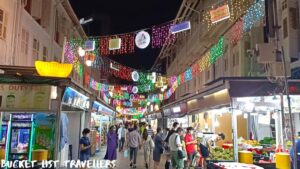
Singapore Destination Guide (2024): What You Need to Know
Affiliate Links
This website contains affiliate links, which means we may earn a commission on any purchases at no additional cost to you. Your support helps us continue our travels and make more travel blogs and travel videos, thank you!
